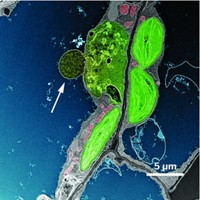Advertisement
Grab your lab coat. Let's get started
Welcome!
Welcome!
Create an account below to get 6 C&EN articles per month, receive newsletters and more - all free.
It seems this is your first time logging in online. Please enter the following information to continue.
As an ACS member you automatically get access to this site. All we need is few more details to create your reading experience.
Not you? Sign in with a different account.
Not you? Sign in with a different account.
ERROR 1
ERROR 1
ERROR 2
ERROR 2
ERROR 2
ERROR 2
ERROR 2
Password and Confirm password must match.
If you have an ACS member number, please enter it here so we can link this account to your membership. (optional)
ERROR 2
ACS values your privacy. By submitting your information, you are gaining access to C&EN and subscribing to our weekly newsletter. We use the information you provide to make your reading experience better, and we will never sell your data to third party members.
Biological Chemistry
Reactive Oxygen Species Help Tadpoles Heal
Without the oxygen-containing compounds, which have traditionally been considered harmful to cells, tadpoles cannot regenerate amputated tails
by Lauren K. Wolf
January 21, 2013
| A version of this story appeared in
Volume 91, Issue 3
Reactive oxygen species (ROS) such as hydrogen peroxide have long been notorious for causing harm to cells. A new study, however, suggests that these compounds might not be so bad after all. A research team, led by Enrique Amaya of the University of Manchester, in England, has demonstrated that tadpoles need ROS to regenerate their tails (Nat. Cell Biol., DOI: 10.1038/ncb2659). Understanding how much ROS is good or bad for cells and how the tadpoles regulate ROS levels could help scientists eventually improve tissue healing and regeneration in humans, Amaya says. To show the importance of ROS, the researchers first genetically engineered tadpoles to produce a protein that shifts its fluorescence when oxidized by compounds like hydrogen peroxide. After they amputated the tadpoles’ tails, they found high concentrations of ROS in the regrowing tissue, as measured by fluorescence imaging. The team also demonstrated that tail regeneration can’t proceed without ROS. When the researchers exposed amputated tadpoles to both an antioxidant, which scavenges ROS, and compounds such as apocynin, which prevent the enzyme NADPH oxidase from generating ROS, tail regrowth was stunted.






Join the conversation
Contact the reporter
Submit a Letter to the Editor for publication
Engage with us on Twitter